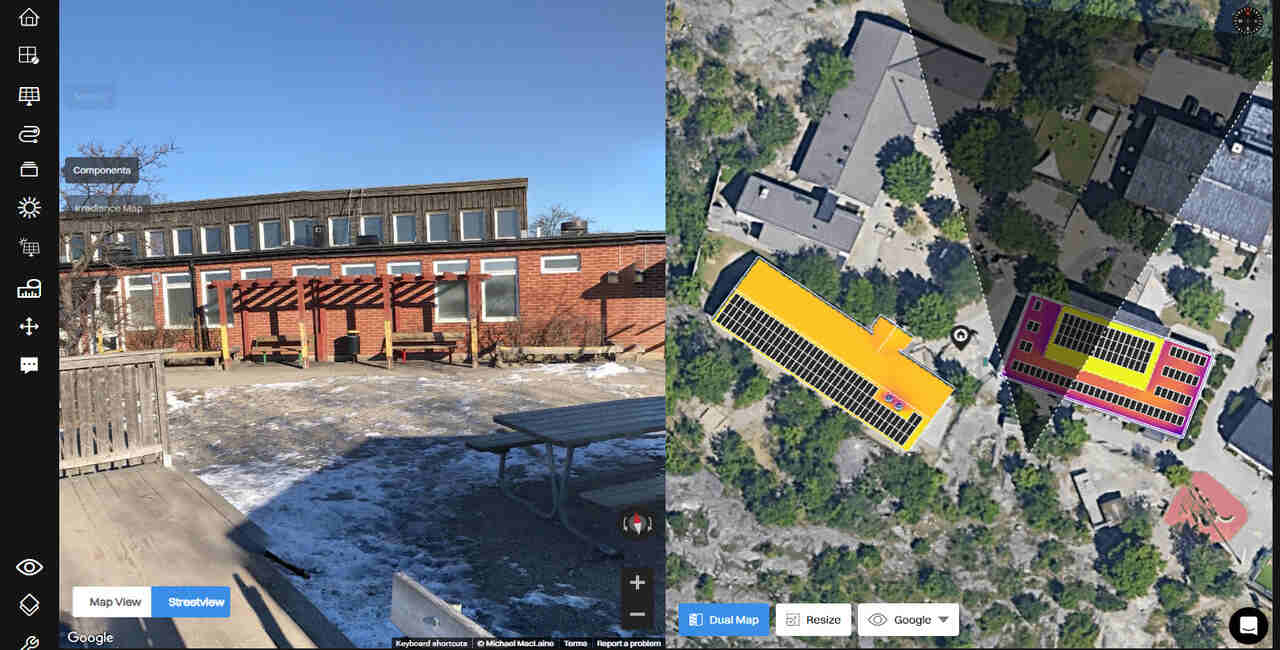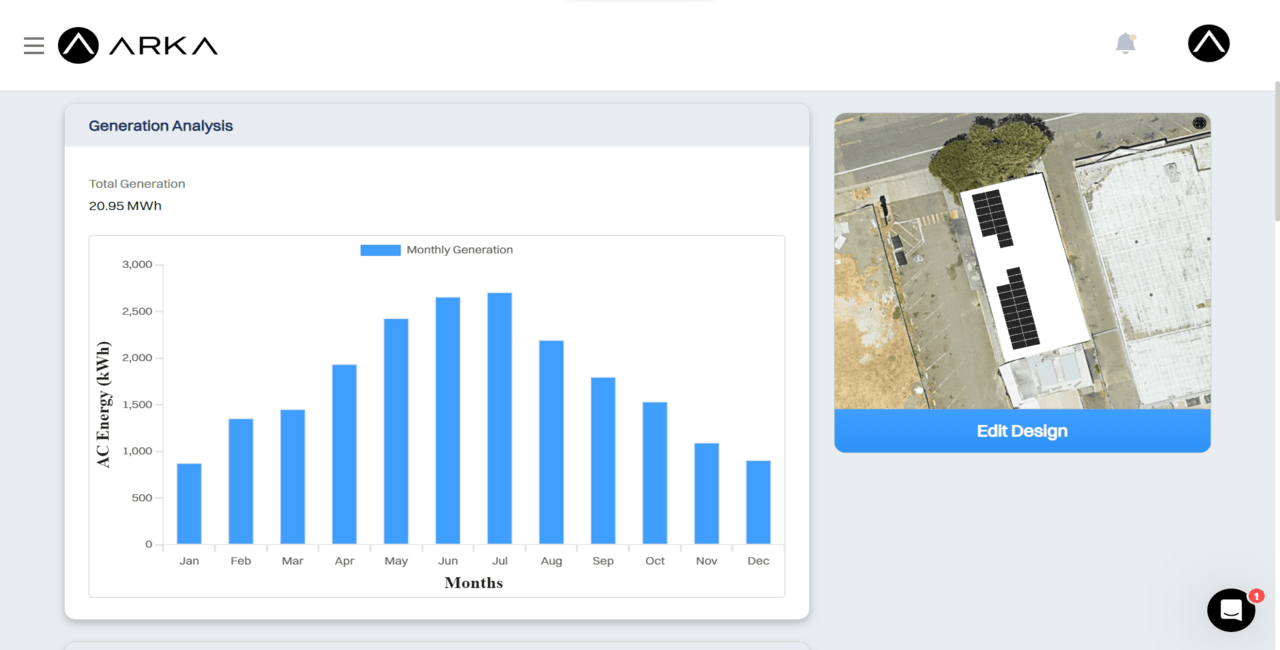Best Solar Simulation Software 2024

The sun's energy is a versatile source of energy that may be used to heat, cool, and brighten houses and businesses. More energy from the sun falls on Earth in one hour than everyone on the planet uses in a year. Sunlight is converted into useful energy for buildings in a variety of ways. Solar photovoltaics for electricity, passive solar design for space heating and cooling, and solar water heating are the most common solar technologies for homes and businesses.
As a solar designer and installer, it is critical to create energy-efficient and cost-effective systems. That is why solar simulation software is critical for solar designers, planners, and sales consultants to create realistic bids for potential solar customers.
So let's get into some vital information regarding solar simulation software and learn more about what it's used for, how to pick one, and the main phases in PV system design.
What Is Solar Simulation Software Used For?
Solar simulation software is used to build and model photovoltaic (PV) solar systems. They are also used to assess the performance of PV systems. It aids in system design by evaluating the size, choices, and specifications of different solar power system components, such as the solar panel array, PV inverter, charge controller, and battery bank, as well as assessing any system losses.
Solar simulation software also calculates the impact of varying orientations and tilt angles on system performance and global variables like shading losses. The capacity to determine the cost and payback period of residential and commercial projects is a critical aspect of solar simulation software.
Essentially, solar simulation software assists engineers in creating efficient but cost-effective on-grid or off-grid solar PV systems.
What Are The Benefits Of Using Solar Simulation Software?
Solar simulation software enables energy experts and designers to do a wide range of jobs and calculations with ease. Without them, these calculations would have taken a long time. It also provides easy automation, allowing solar businesses to give consumers quick and accurate quotes.

This software simplifies and streamlines the engineering and sales processes, which is especially important for large-scale solar plants with challenging topographies.
The following are the primary benefits of using solar simulation software:
- It can determine the size of different components in a solar photovoltaic system, such as a solar panel array, inverter, charge controller, and battery storage system.
- It computes the influence of varied orientations and tilt angles on performance over time. The estimate considers global issues such as shading losses.
- It can assist in calculating the power generation and energy output of a solar PV system based on the time of day.
- It aids in the determination of cost-benefit analysis for the design of an effective but economical system.
- Solar simulation software can assist in the creation of a report for a project or a plan to accomplish the goal of constructing a solar power system.
What Are The Most Important Features Of Solar Simulation Software?
A good solar simulation software should have the following features:
Ease of Use: The first quality of an effective solar simulation software is its ease of use. Both engineers and technicians should find it straightforward to comprehend and use.
Flexibility: This is another crucial aspect that impacts the use of a solar system design tool. It aids in determining the size, quantity, and type of each component utilized in the photovoltaic system. As a result, the system's performance may be optimized.
Accuracy: The solar energy program must be precise in calculating the many elements, such as energy yield, number of panels (PV modules), inverter size, and so on.
User-Friendly: The software used to develop photovoltaic systems should be simple to use. This enables users to quickly obtain the needed results after entering the necessary data.
Report Generation: A good solar simulation software produces comprehensive reports. Reports aid in determining the components required for the construction of a solar power system. They also assist in determining and summarizing system energy losses and expenses. The report also provides project details such as the project name, location, description, and so on.

Compatibility: Solar simulation software should be compatible with a wide range of operating systems like Linux, Windows, and Mac, or be available via any web browser.
What Are The Key Steps In Designing A Solar PV System?
A photovoltaic system is designed in four major stages:
- System Design
- Sizing
- Performance Analysis
- Economic Viability
System Design: Collecting site location data is part of system design. Solar irradiation, shading analysis, and utility connection needs are all included in this data.
Sizing: The second phase is the sizing procedure, which determines the size of each component of the PV system. Other characteristics, such as battery capacity or inverter capacity, are also calculated. This guarantees that enough electricity is generated to meet residential energy demand throughout the day and year.
Performance Analysis: The intended system is simulated using solar PV modeling software during the performance study.
Economic Viability: Finally, the economic feasibility of the project must be determined. A full economic and feasibility assessment for the building and commissioning of the solar PV system should be done at this point.
List Of Top 5 Solar Simulation Software:
ARKA 360
ARKA 360 is a SaaS and AI cloud-based software for solar design and sales growth. It specializes in developing software for solar installers and government bodies to create preliminary sales quotations and optimize system designs. ARKA 360 was founded in 2017 and is headquartered in New Delhi.
Key Features:
AI-Assisted Faster Design Creation: Create designs that are simple, accurate, and quick. View your design in 3D or 2D. Discover numerous iterations and choose the best solution depending on your customer's specifications.
Smarter Energy Profiling & Modeling: Generate detailed electrical diagrams for utility-scale or domestic projects in minutes. Choose from a choice of mounting templates and panel tilt values. Draw in barriers of any shape using the polygon tool and more.
Accurate Simulations and Shading Analysis: Easily predict your monthly, quarterly, and annual power production and losses. Simulate shading patterns for any day of the year and generate reliable heat maps.
Sales Proposals and Commercial Reports: Attract clients with thorough yet exhaustive proposals. Focus on the key growth metrics and provide multiple financial solutions concisely. View your Total Savings, Payback Period, and Internal Return Rate, in one single view.
CAD Layout and SLDs: Fabricate single-line diagrams and export them as DXF files for easy construction plans.
Availability:
ARKA 360 is an online Software as a Service (SaaS) and can be used on any modern browser using computers, laptops, or even mobile phones.
Website: https://arka360.com/
Aurora Solar
Aurora Solar develops cloud-based software that enables solar PV engineering design, provides workflow management functionality, and facilitates sales and customer acquisition for solar installers and financiers. Christopher Hopper and Samuel Adeyemo founded Aurora Solar in 2013. It has its headquarters in San Francisco, California.
Key Features:
Simple and Efficient Design Interface: Users can perform detailed shading analysis and shade measurement directly in the application, drag and drop components to create system designs, and generate single line diagrams automatically. All designs are automatically checked for electrical constraints, industry best practices, and NEC rule compliance.
Easy and Automated Financial Report: It enables users to quickly determine a project's viability and easily model many of the most common financing structures. Financial models consider the project's energy profile and calculate accurate and dynamic visualizations of financial information such as cash flows, payback periods, LCOE, and bill savings.
Compelling Sales Proposals: Using the project and design data already created in Aurora, sales proposals automatically pull in the custom project and client data, 3D visuals, and financial analysis into any number of clean and professional templates, guaranteeing a consistent, yet customized experience for all clients.
Availability:
Aurora Solar is an online SaaS company that uses aerial imagery to assess solar installation projects.
Website: https://www.aurorasolar.com/
HelioScope
HelioScope is a popular platform in the solar industry for designing and selling high-performance solar arrays. Designers and engineers will find it simple to use and understand. It has a plethora of features that are essential for anyone interested in solar energy. It's no surprise that many users have used this software to design solar PV systems.
Key Features:
HelioScope has a number of useful features as an online solar design tool. This includes the following items, which are listed below,
- Solar Panels Layout
- Shading Analysis
- Single Line Diagram Export
- 45,000 Component Library
- Quick Design Revision
- Google Maps Integration
- PAN File Support
- Unlimited Designs
- API
- Computer-Aided Drawing (CAD) Tools
- Solar Energy Production Estimates
- System Energy Loss Chart
- 3D Design
- Voltage Drop Calculation
- One-Click Sharing
- SketchUp Shading Integration
- Wiring Selection
- NSRDB/NREL Meteo Integration
- Up to 5 MW Systems
Availability:
HelioScope is accessible through any modern browser. Since it is web-based, users can create solar PV designs using their computers, laptops, or even mobile phones.
Website: https://www.helioscope.com/
PVsyst
PVsyst is a PC software package for studying, sizing, and analyzing data from complete PV systems. It covers grid-connected, stand-alone, pumping, and DC-grid (public transportation) PV systems, as well as extensive meteo and PV system component databases and general solar energy tools. This software is designed for architects, engineers, and researchers. It is also extremely beneficial for educational training. PVsyst focuses on comprehensive and precise PV system analysis using a comprehensive set of tools.
Key Features:
PVSyst software has the following features:
- System designing
- System sizing
- Creating a shading scene
- It generates simulations and outcomes.
- Model storage systems
- Some additional features include importing data and components and getting weather data from meteonorm.
- Simulate the aging effect of solar modules, etc.
Availability:
You need to download the software from its official website and in order to use full PVsyst capabilities you have to buy a license, you can also renew subscriptions for existing licenses on their online shop.
Website: https://www.pvsyst.com/
Open Solar
OpenSolar is the world's first free, end-to-end solar design and sales application, providing solar professionals with a highly sophisticated, yet simple-to-use software tool that meets all of their needs, from marketing and lead management to solar system design, sales, installation, and service.
Key Features:
3D Design, Leading Accuracy: The fastest, simplest and most accurate 3D design tool available, making your proposals reliable and bankable from the office and in the field.
Integrated Finance Partners: Effortless selection and integration of your chosen finance providers with in-app real-time approvals, making selling easier than ever.
Proposals that Sell: Fully customizable, interactive proposals online or as a PDF. 24% sale conversion drawn from experience selling 10,000's of systems, face-to-face and over the phone.
Free of Charge: All of this is available for free to all users indefinitely.
Open API: Connect your existing CRM and business tools to our industry-leading platform. Work in the manner in which you prefer.
Availability:
It is a cloud-based app with a mobile-friendly operating environment that allows you to manage your business from any device in the office or in the field.
Website: https://www.opensolar.com/
Bottom Line:

Solar simulation software is a very useful tool. It adds value to solar energy system designs for all projects. It enables engineers and designers to determine the potential solar energy output of a solar PV system, whether grid-tied or off-grid. With solar energy technology constantly improving, PV simulation software is an essential tool for success.

